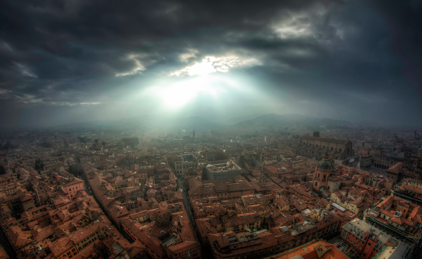Adnan Khan discusses his research on women’s book usage in fifteenth and sixteenth century medieval Italy.
With this project aiming to analyse female book ownership in Europe and beyond, Italy is one of the most important regions to be considered by historians given its central role in the Renaissance. This blog will highlight the research undertaken in this interdisciplinary research project in understanding what work on this topic has been done in the secondary literature, and the areas of analysis in this field that still require investigation. The picture below shows Florence, the birthplace of the Renaissance.

In the study of women’s book usage in Italy in the medieval period, historians have focussed considerably on the ‘long sixteenth century’. The period from 1580-1630, saw 66 single authored works written by Italian women. These varied in form including epic poems, pastoral dramas, tragedies, romances, and secular and religious works. This period therefore saw women become established in literary genres which had been previously dominated by male writers. However, this process of larger female book writing and usage can be understood further back than the sixteenth century alone, with important developments starting in the fifteenth century.
As has been studied by Virginia Cox, female book writing was a process that started far earlier in the Renaissance than has previously been stressed by scholars. Prior to the Renaissance, women had undertaken some religious writings however within the secular genre that emerged in the fifteenth century a new secular, cultural profile was created which Cox’s terms ‘the learnt woman’. This new profile that developed meant that it became socially more acceptable for women to write books alongside men, with this flourishing in the following century.
Two pioneers of the female women’s sixteenth century writings were Veronica Gambara (1485–1550) and Vittoria Colonna (1490–1547). Gambara was born in Pralboino and received a humanist education studying philosophy, scripture, theology, Greek and Latin. Gambara wrote many poems, with 80 of these available in English translation today. Colonna was also a highly influential poet from Pescara writing five major collections of poetry such as the Rime de la Divina Vittoria Colonna Marchesa di Pescara. However, from Cox’s research, she has found that both these women are genealogically connected to notable dynasties of “learned women” like the Nogarola of Verona and the Montefeltro of Urbino living in the fifteenth century. Therefore, the cultural profile of ‘the learnt woman’ created by the female elite in the fifteenth century saw the emergence of the vast literary works of similarly elite women in the following century. Yet, the image of the learnt Renaissance women was always restricted to the elite woman who had the opportunity to write and use books from the humanist education they received. How far this stretched to the poorer and less influential members of Italian Renaissance society however needs to be addressed by scholars despite the limited evidence available.

